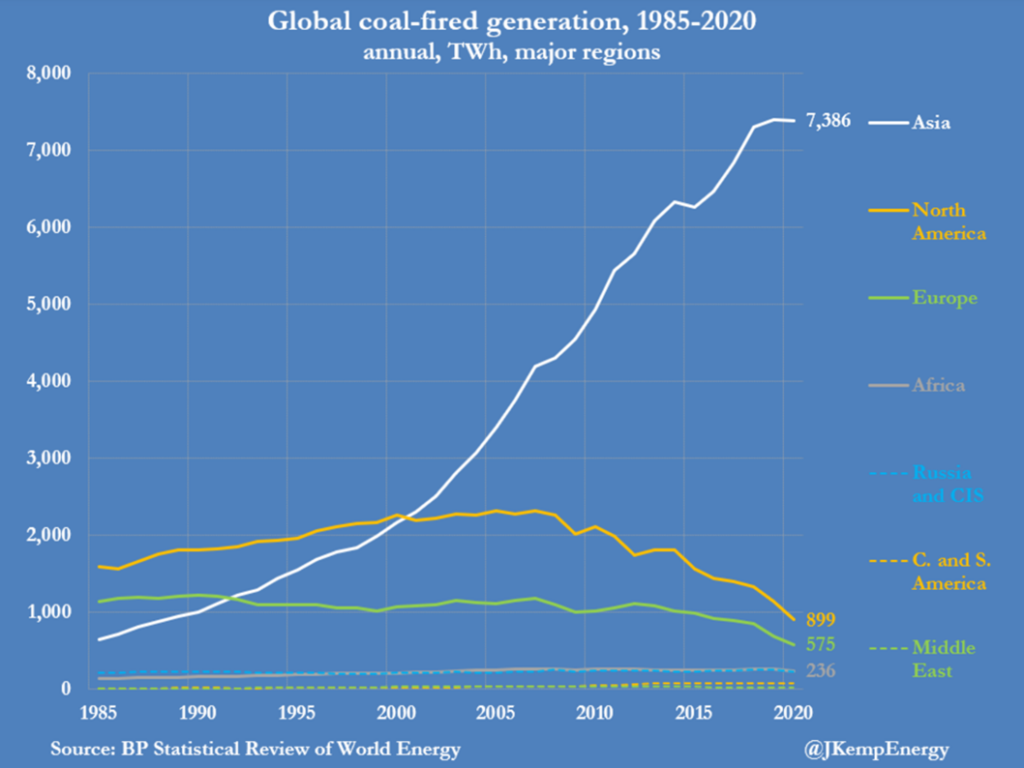Green energy: A bubble in unrealistic expectations? blog.evergreengavekal.com
Part 2:
BlackRock’s CEO recently admitted that, despite what many are opining, the green energy transition is nearly certain to be inflationary.It used to be that the cure for extreme prices was extreme prices, but these days I’m not so sure. Oil and gas producers are very wary of making long-term investments to develop new resources given the hostility to their industry and shareholder pressure to minimize outlays.I expect global supply to peak sometime next year and a major supply deficit looks inevitable as global demand returns to normal.In Norway, almost 2/3 of all new vehicle sales are of the electric variety (EVs) – a huge increase in just over a decade. Meanwhile, in the US, it’s only about 2%. Still, given Norway’s penchant for the plug-in auto, the demand for oil has not declined.China, despite being the largest market by far for electric vehicles, is still projected to consume an enormous and rising amount of oil in the future.

Part 2 blog.evergreengavekal.com
About 70% of China’s electricity is generated by coal, which has major environmental ramifications in regards to electric vehicles.Because of enormous energy demand in China this year, coal prices have experienced a massive boom. Its usage was up 15% in the first half of this year, and the Chinese government has instructed power providers to obtain all baseload energy sources, regardless of cost. The massive migration to electric vehicles – and the fact that they use six times the amount of critical minerals as their gasoline-powered counterparts –means demand for these precious resources is expected to skyrocket.This extreme need for rare minerals, combined with rapid demand growth, is a recipe for a major spike in prices.Massively expanding the US electrical grid has several daunting challenges– chief among them the fact that the American public is extremely reluctant to have new transmission lines installed in their area.The state of California continues to blaze the trail for green energy in terms of both scope and speed. How the rest of the country responds to their aggressive take on renewables remains to be seen.It appears we are entering a very odd reality: governments are expending resources they do not have on weakly concentrated energy. And the result may be very detrimental for today’s modern economy.If the trend in energy continues, what looks nearly certain to be the Third Energy crisis of the last half-century may linger for years. In 2020, China added three times more coal-based power generation than all other countries combined. This was the equivalent of an additional coal planet each week. Globally, there was a reduction last year of 17 gigawatts in coal-fired power output; in China, the increase was 29.8 gigawatts, far more than offsetting the rest of the world’s progress in reducing the dirtiest energy source. (A gigawatt can power a city with a population of roughly 700,000.)
Overall, 70% of China’s electricity is coal-generated. This has significant environmental implications as far as electric vehicles (EVs) are concerned. Because EVs are charged off a grid that is primarily coal- powered, carbon emissions actually rise as the number of such vehicles proliferate.

|






